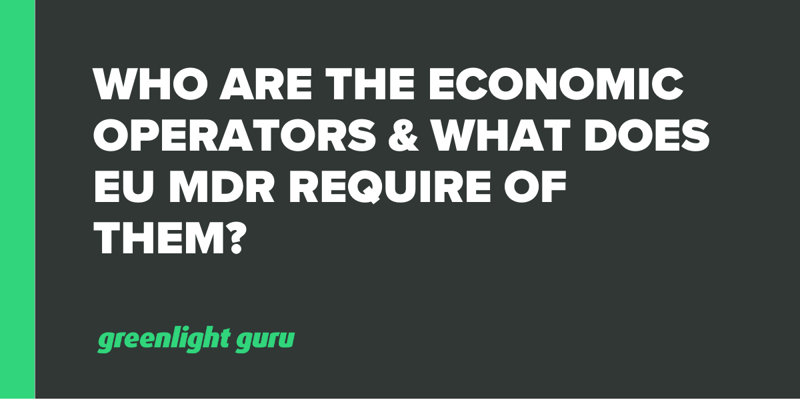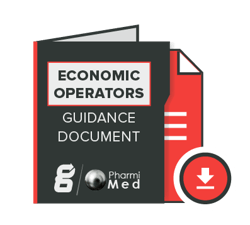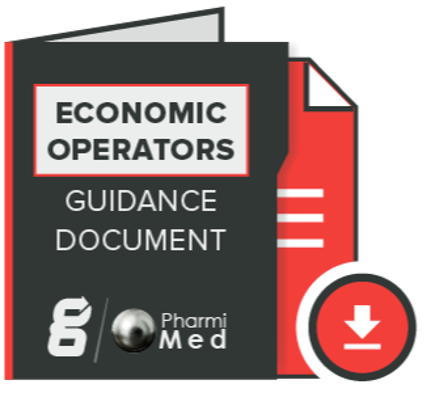Who are the Economic Operators & What Does EU MDR Require of Them?

There are four legal entities designated as economic operators under the European Union Medical Device Regulation (EU MDR):
-
Manufacturers
-
Importers
-
Distributors
-
Authorized representatives
Each of these economic operators has specific obligations under EU MDR relating to activities like record-keeping, reporting, and handling of the product. Ensuring that you’re working with partners who are fully compliant with the regulations is no easy task, but it’s essential to delivering safe and effective medical devices to market in the EU.
So, let’s get into the details of the roles these economic operators play and how to successfully implement the requirements for economic operators under EU MDR.
Who are the different economic operators under EU MDR?
The four economic operators defined in Chapter 1, Article 2 of EU MDR each have different roles to play, though their responsibilities are often similar. They can quickly become confusing if we don’t clarify each of them, so let’s first get to know each economic operator a little better.
Economic Operator: Manufacturer
The manufacturer is the legal entity that owns the technical documentation (including clinical data) and intellectual property of the product. It’s important to note that the manufacturer can still use a contract manufacturer. They can even use a contractor for the design of the device. However, they still must fulfill all the obligations of the legal manufacturer, which are found in Chapter II, Article 10 of MDR.
Economic Operator: Importer
The importer is the legal entity that has financial ownership over the product when it crosses the border into the EU, and is responsible for placing the product on the EU market for the first time. Their obligations can be found in Chapter II, Article 13 of MDR.
Economic Operator: Distributor
The legal entity that takes the product once it’s already in Europe and transfers it to another distributor or the end user. MDR defines a distributor as anyone “in the supply chain, other than the manufacturer or the importer, that makes a device available on the market, up until the point of putting it into service.” The obligations of the distributor can be found in Chapter II, Article 14.
Economic Operator: Authorized representative
The authorized representative previously existed under the Medical Device Directives, and is the legal representative of the manufacturer when the manufacturer is not based in the EU. Their obligations are found in Chapter II, Article 11 of MDR. Note that the authorized representative is sometimes referred to as the “EC Rep” on packaging and labeling.
Now, to give you a better idea of how these economic operators interact under EU MDR differ, here are a couple simplified examples:
When the manufacturer is located in the EU
For this example, let’s say the legal manufacturer is located in France, an EU member state. Their product is made in China and it enters the port at Rotterdam in the Netherlands. The manufacturer also has distributors in Spain and Switzerland.
Let’s also say that the legal manufacturer is maintaining financial ownership of the product as it enters the EU. In this case, they do not need an importer as defined by MDR. They may need an importer as regards customs regulations, but that is not the same thing as an importer under MDR. Additionally, because the legal manufacturer is located in an EU member state, they won’t need an authorized representative.
So, with this example, we only have three economic operators: the legal manufacturer and the two distributors.
When the manufacturer is located outside of the EU
When the legal manufacturer is located outside of the EU, the situation is more complicated.
Let’s look at an example where the manufacturer is based in the US, and the devices are still made in China and come through the port at Rotterdam. The distribution centers are still in Spain and Switzerland, but the manufacturer has an affiliate in Belgium that has financial ownership of the devices when they come into the EU.
In this case, the manufacturer will need an authorized representative, as the company is located outside of the EU. They still have the two distributors in Spain and Poland, but now have an importer (the affiliate in Belgium), as well.
There are a total of five economic operators in this instance. And keep in mind, this is a purposefully simplified example; you could potentially have multiple importers and many more distributors in your supply chain.
Following EU MDR requirements for economic operators
Adding MDR requirements for economic operators to an already complicated supply chain isn’t easy, but it isn’t impossible. I’d advise you to start by breaking the process down into three steps:
-
Map the supply chain. The more complex your supply chain, the more time you need to spend carefully mapping it out and identifying the roles of every legal entity involved in your supply chain.
-
Establish and communicate clear requirements. It’s not enough to tell your various economic operators to read the requirements in MDR. It’s up to you to “translate” those requirements into the language of the supply chain.
What does it mean to perform the verifications MDR requires? How does that actually happen? When does it happen? Will it be done electronically? Which verifications need to happen for each product type?
Answering these types of questions clearly is critical to making sure that all the economic operators in your supply chain are in compliance.
-
Track your progress closely. Monitoring your progress closely will help you catch any issues as soon as they crop up. The progress you are making toward compliance should be transparent and available to both internal and external stakeholders of your company, so all parties understand where the implementation of requirements stands at any time.
Keep in mind that regulatory compliance is not always the top priority of importers or distributors. You will need to follow up with them regularly, provide the expertise they need, and quickly address any questions they have. Otherwise, you risk a lack of compliance among the economic operators in your supply chain.
Simplifying the supply chain of economic operators
Medical device companies often have multiple products made at multiple production sites and multiple distributors within the EU. This complexity means that some manufacturers have more than one importer and many different distributors—which gets complicated quickly.
However, there are some things you can do to streamline your supply chain:
Use one importer
One of the big requirements for importers under MDR is that they must put their name and address on the label.
By unifying the flow of your product into the EU with one importer, you reduce the number of labels that need to be added to your product, and you may even be able to pre-print and attach the label for that single importer.
Crucially, you will then only have one organization that needs training and must register in EUDAMED.
Reduce the number of distributors
It may not make sense to use only one distributor, but that doesn’t mean you need 100 of them, either. Reducing the number of distributors you use will also cut down on the costs of using those distributors and the time and energy you spend on ensuring they are in compliance with the applicable MDR requirements.
Centralizing repackaging and translation
Distributors are allowed to repackage products, as long as they do not interfere with the sterile packaging or labeling. They are also allowed to translate the Instructions for Use (IFU).
However, both of these activities require a documented process, and the distributor must notify the manufacturer and the competent authority of the country they are operating in. They also must have a notified body inspect the parts of their QMS related to those activities.
Centralizing these activities in one country makes it easier to ensure they are well controlled and reduces the number of notified body inspections.
Streamline your regulatory activities with Greenlight Guru
Your supply chain may be complicated, but your QMS shouldn’t be. You need a purpose-built solution that keeps things simple even when you have a multitude of economic operators with reporting obligations.
At Greenlight Guru, we built our MedTech Suite with dedicated postmarket software workflows, like Nonconformance Management, Complaint Management, and CAPA Management.
By assigning permissions to the appropriate users and groups, you can give document access and visibility to the people that need to manage processes and procedures. Improve transparency with your economic operators by letting them see trends in your quality data and understand the impact they have on your quality system, your devices, and your organization as a whole.
If you’re ready for a QMS built specifically to help medical device companies achieve True Quality, then get your free demo of Greenlight Guru today.
Looking for a design control solution to help you bring safer medical devices to market faster with less risk? Click here to take a quick tour of Greenlight Guru's Medical Device QMS software
Benjamin Bancroft is a Medical Device Guru at Greenlight Guru who enjoys working on audits, CAPAs and Root Cause Analysis. He is a Quality and Regulatory Manager who began his career maintaining the QMS for multiple companies as a CAPA and audit SME. He enjoys helping customers successfully navigate regulations to...
Related Posts
What are the Distributor Requirements under EU MDR and IVDR?
MEDDEV 2.7/1 Rev. 4 & MDCG Guidance: Carrying Out Clinical Evaluation Under EU MDR
Why Investigator Initiated Studies Alone Are Not the Solution for PMCF Under EU MDR
Get your free PDF
Economic Operators Guidance Tool











